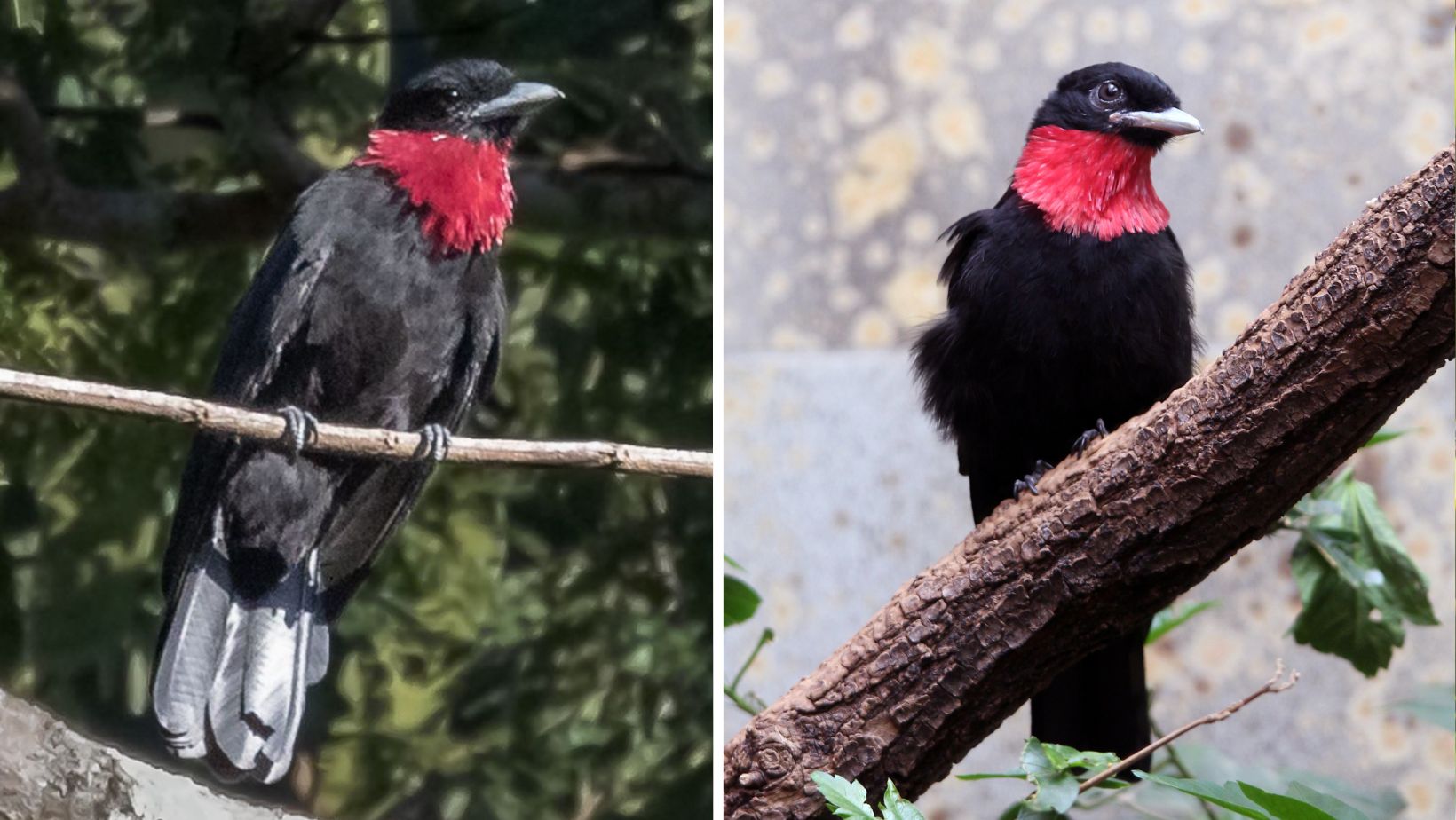
A bird wearing a suit almost entirely black along with a stunning crimson cravat which he can pump out to good effect.
Meet the Purple-throated Fruitcrow:
 “File:Querula purpurata – Purple-throated Fruitcrow (male); Parauapebas, Pará, Brazil.jpg” by Hector Bottai is licensed under CC BY-SA 4.0.
“File:Querula purpurata – Purple-throated Fruitcrow (male); Parauapebas, Pará, Brazil.jpg” by Hector Bottai is licensed under CC BY-SA 4.0.
The purple-throated fruitcrow (Querula purpurata) belongs to the cotingas, a family of birds in the avian family Cotingidae. This bird is unique as the sole representative of the genus Querula. The purple-throated fruitcrow presents as a stout, medium-sized bird with a glossy black plumage. Males exhibit a prominent, large purple-red upper throat patch, similar to the iridescent gorget seen in hummingbirds. This vibrant color extends to the side of the neck.
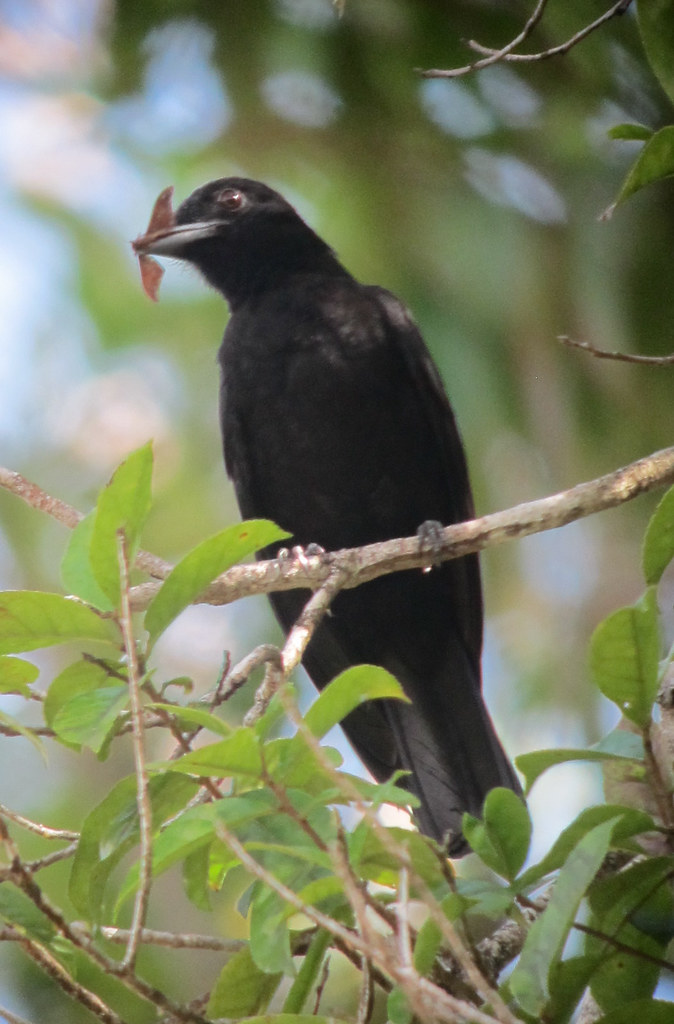 “Querula purpurata / Cuaba / Purple-throated Fruitcrow (female)” by felixú is licensed under CC BY-SA 2.0.
“Querula purpurata / Cuaba / Purple-throated Fruitcrow (female)” by felixú is licensed under CC BY-SA 2.0.
The bird is characterized by a short, wide, pointed grayish bill, complemented by black eyes and gray legs.
The female looks like the male without the “purple” throat.
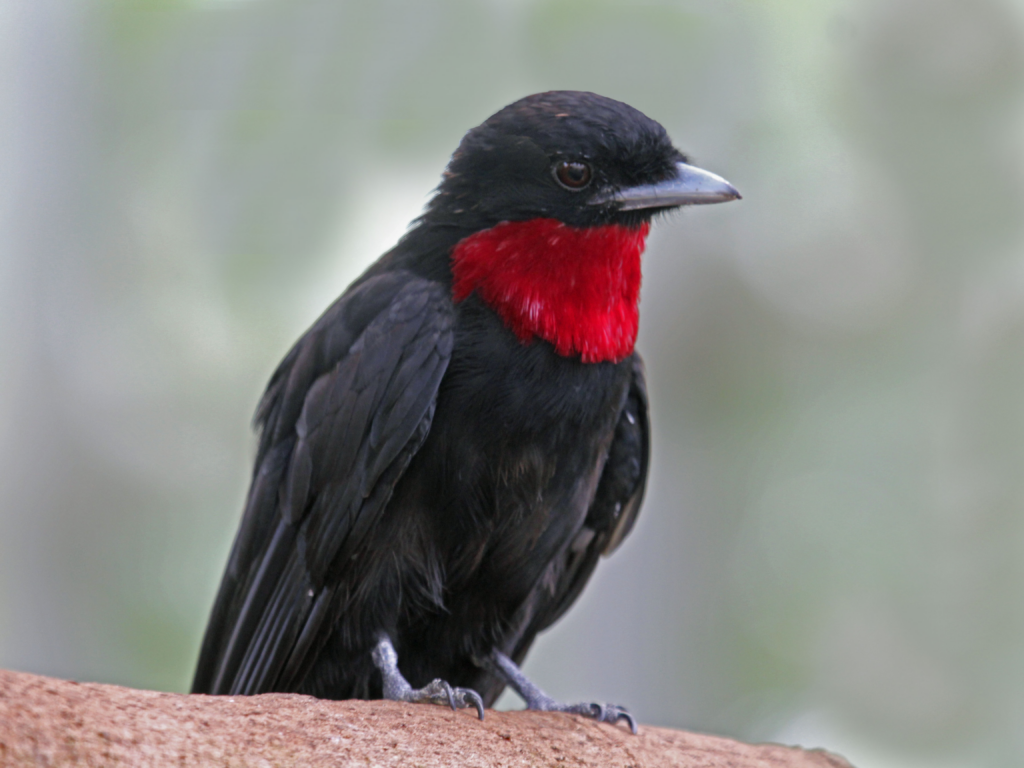 “File:Purple-throated Fruitcrow RWD.jpg” by DickDaniels (http://carolinabirds.org/) is licensed under CC BY-SA 3.0.
“File:Purple-throated Fruitcrow RWD.jpg” by DickDaniels (http://carolinabirds.org/) is licensed under CC BY-SA 3.0.
Its natural range includes Nicaragua, Costa Rica, Panama, and much of the northern half of South America.
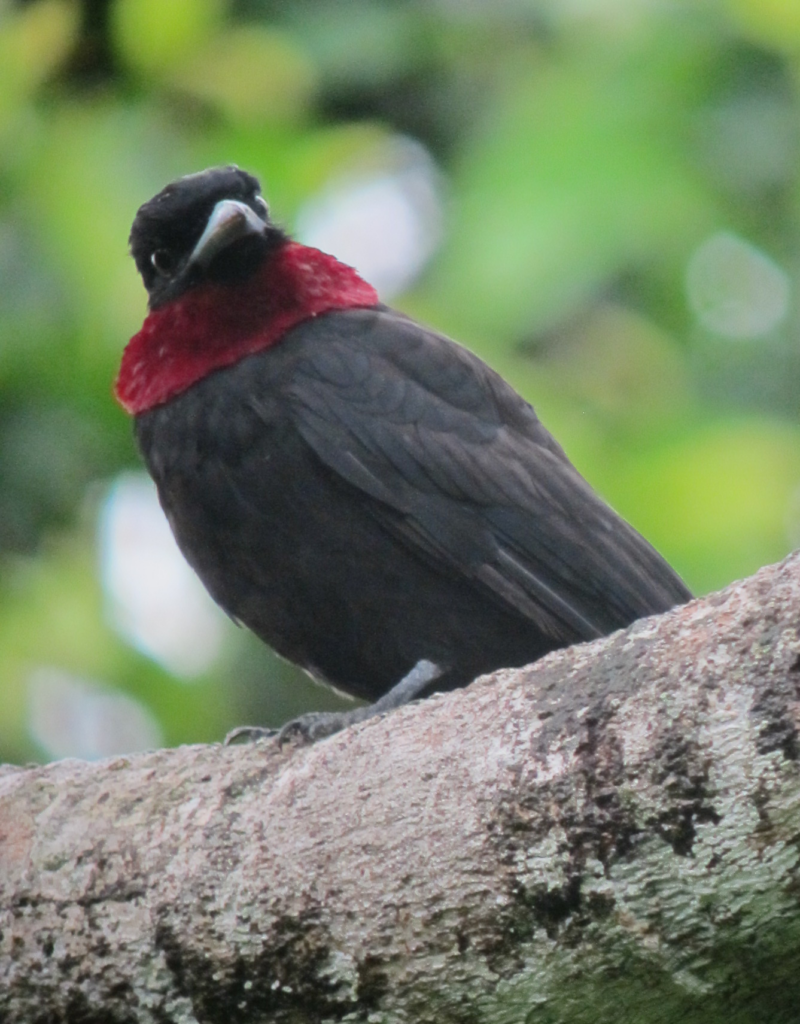 “Querula purpurata Cuaba Purple-throated Fruitcrow (male) (8116377080)” by Félix Uribe from Rionegro, Antioquia, Colombia is licensed under CC BY-SA 2.0.
“Querula purpurata Cuaba Purple-throated Fruitcrow (male) (8116377080)” by Félix Uribe from Rionegro, Antioquia, Colombia is licensed under CC BY-SA 2.0.
They typically inhabit humid lowland forests where it primarily feeds on insects and fruits. The male boasts a glossy black, medium-sized body, enhanced by a distinctive purple-red throat patch.
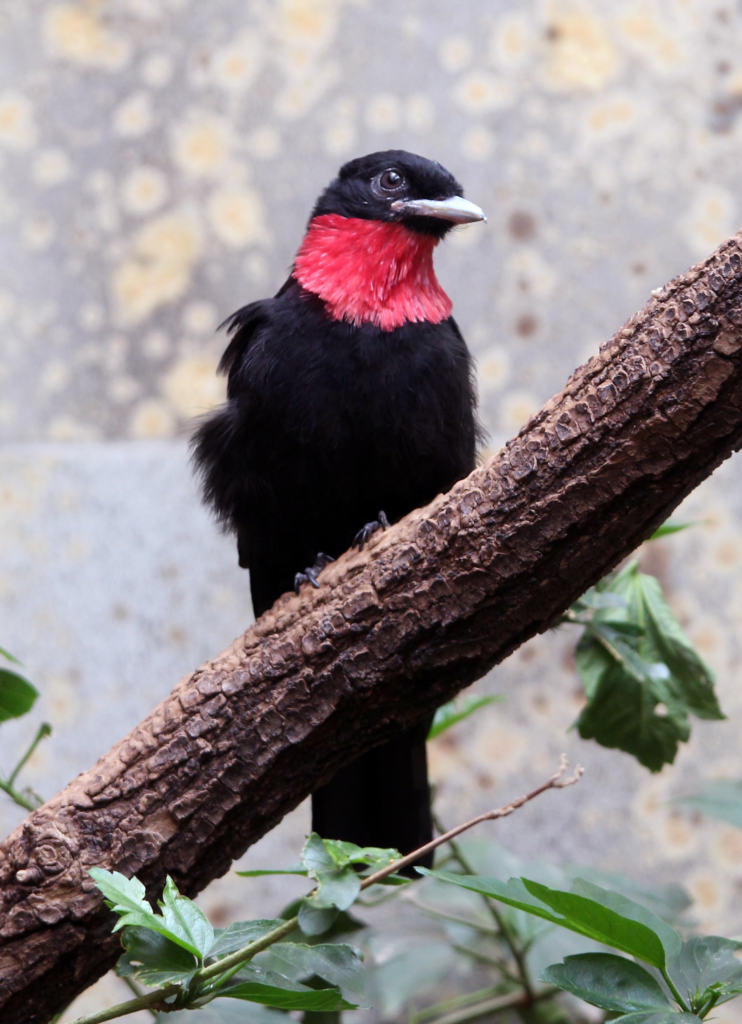 “File:Purple-throated fruitcrow.jpg” by Dmitrij Rodionov is licensed under CC BY-SA 4.0.
“File:Purple-throated fruitcrow.jpg” by Dmitrij Rodionov is licensed under CC BY-SA 4.0.
Despite its name, the purple-throated fruitcrow is not exclusively a fruit-eater. It feeds on both insects and fruits, often moving through the forest canopy in small, chattering groups. These birds are known to nest colonially, with little effort to conceal the nests, making them more conspicuous, especially due to the presence of the noisy group of birds nearby.
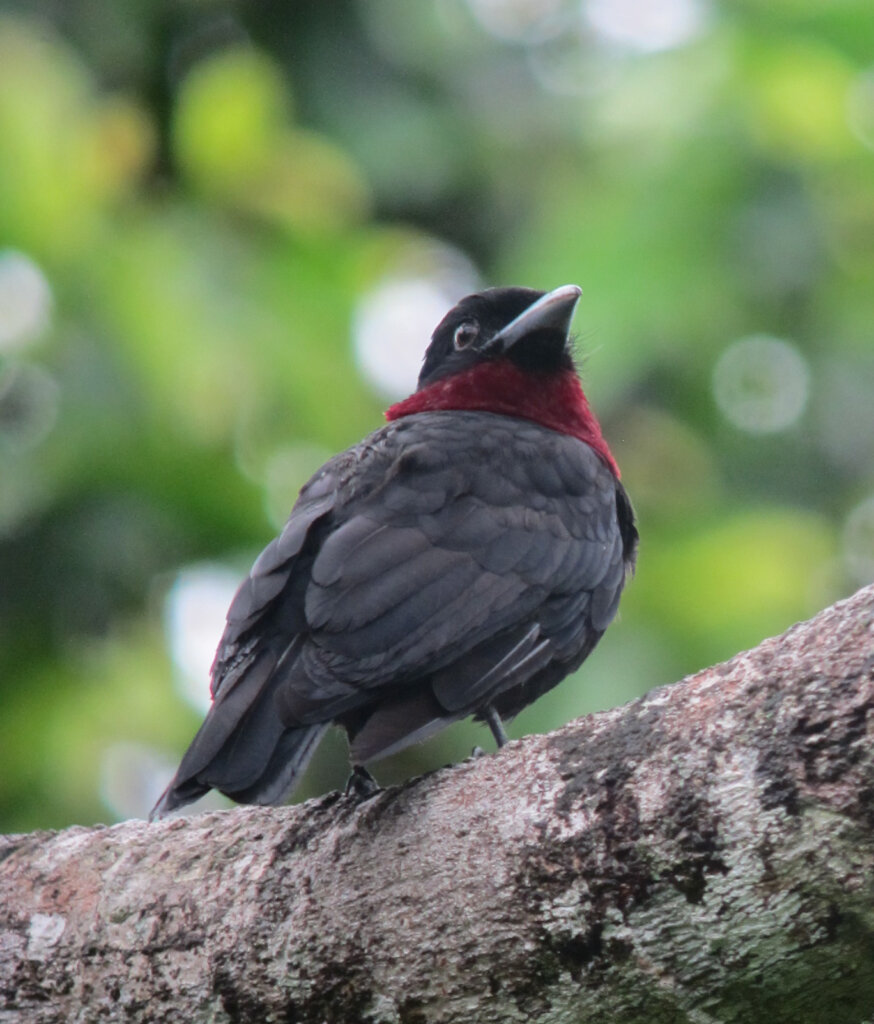 “Querula purpurata Cuaba Purple-throated Fruitcrow (male) (8116370066)” by Félix Uribe from Rionegro, Antioquia, Colombia is licensed under CC BY-SA 2.0.
“Querula purpurata Cuaba Purple-throated Fruitcrow (male) (8116370066)” by Félix Uribe from Rionegro, Antioquia, Colombia is licensed under CC BY-SA 2.0.
The nests of the purple-throated fruitcrow take the form of untidy cups, constructed from small twigs and adorned with even smaller twigs for lining. These nests are often found in fairly conspicuous locations and are defended with great determination by every member of the group. One female within the group assumes the responsibility of laying an egg, an event that garners the collective attention and care of all adults in the group. During the fledging period, which spans a duration of approximately 32 to 33 days, a noteworthy behavior emerges. Despite the fact that the young fruitcrows are typically fed insects instead of the fruit their name implies, this dietary preference plays a significant role. Insects provide a higher protein content, resulting in a quicker developmental process for young birds. This strategic feeding approach contributes to their growth and maturation within the group.
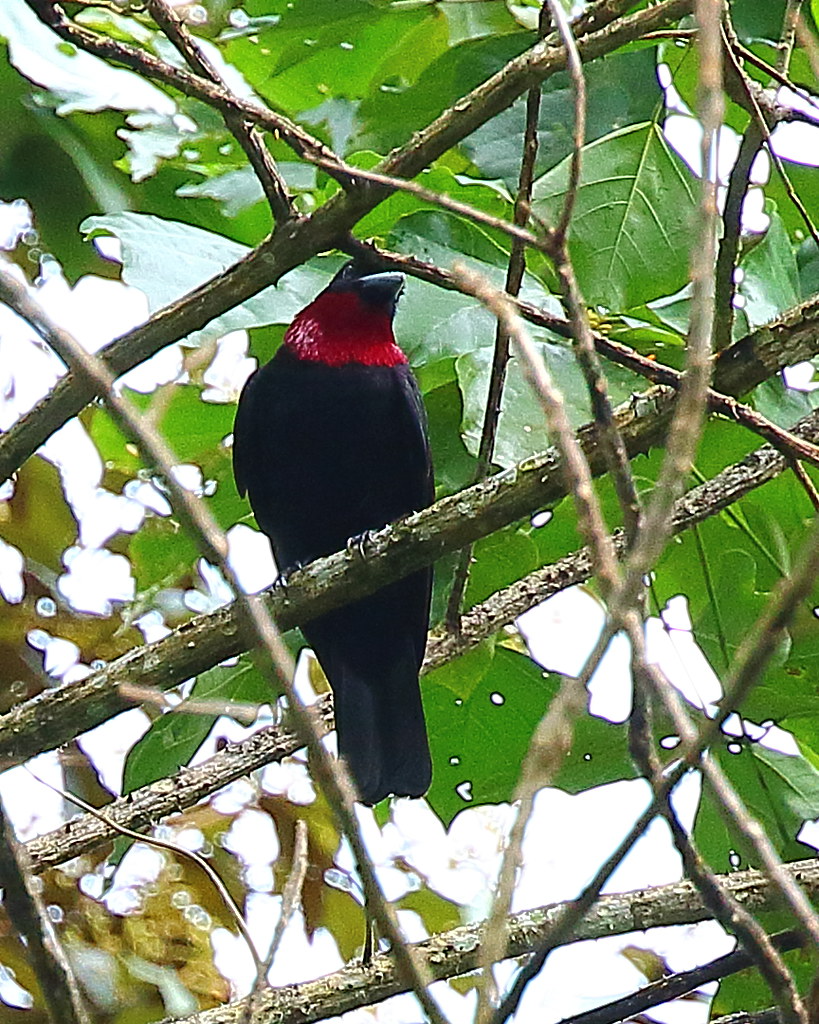 “Purple-throated Fruitcrow” by ryanacandee is licensed under CC BY 2.0.
“Purple-throated Fruitcrow” by ryanacandee is licensed under CC BY 2.0.
Interestingly, these fruitcrows nest in close proximity to other members of their species. Despite a declining population, they are still considered a common species with an extensive distribution. The International Union for Conservation of Nature (IUCN) has evaluated their conservation status, determining it to be of “least concern.”
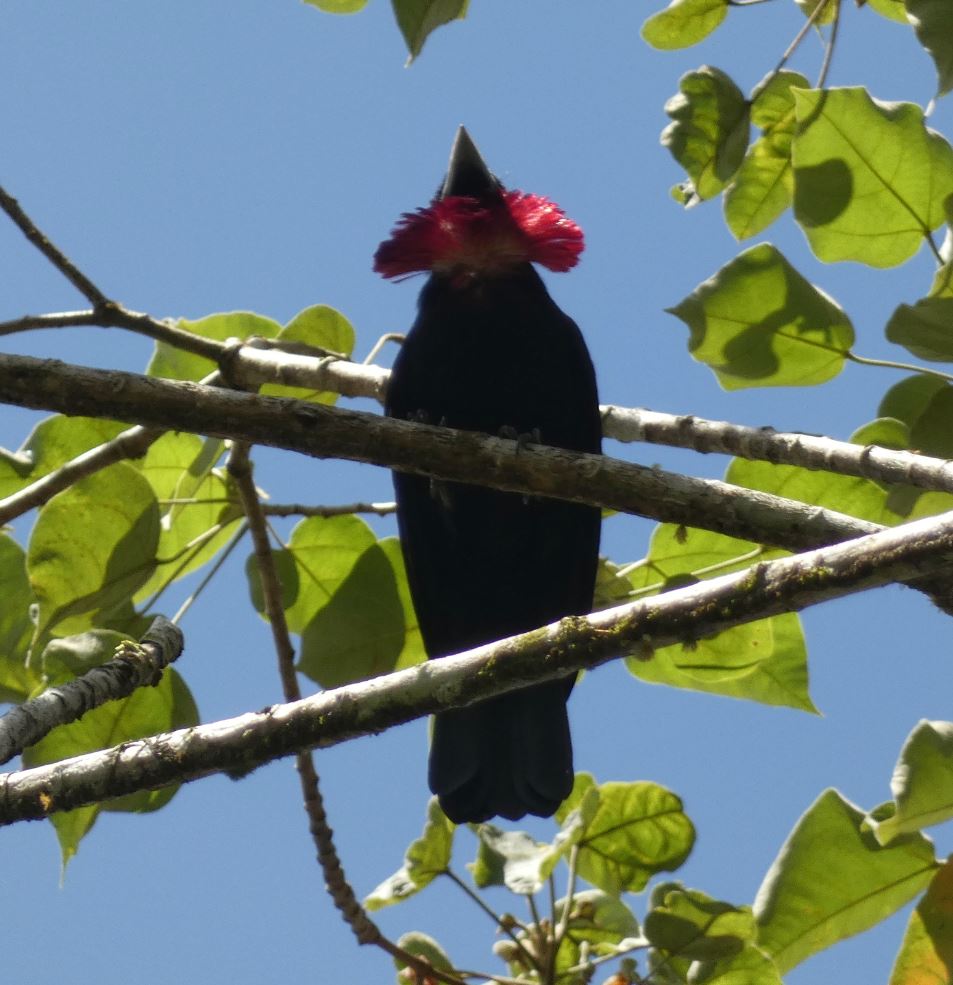 “purple-throated fruitcrow” by Kai Squires is licensed under CC BY 4.0.
“purple-throated fruitcrow” by Kai Squires is licensed under CC BY 4.0.
Watch these birds go about their daily life:
This article uses material from Wikipedia.org which is licensed under the GNU Free Documentation License via Copyright Wikipedia. Images on this page are the sole property of the photographers (unless marked as Public Domain). Please read the license and or contact the photographers directly before using them for any purpose. Thank you all.
Garish In The Best Possible Way, This Vibrant Bird Stands Out For Reasons That Are Obvious To See!
Please SHARE this article with all your bird-loving friends and family.

